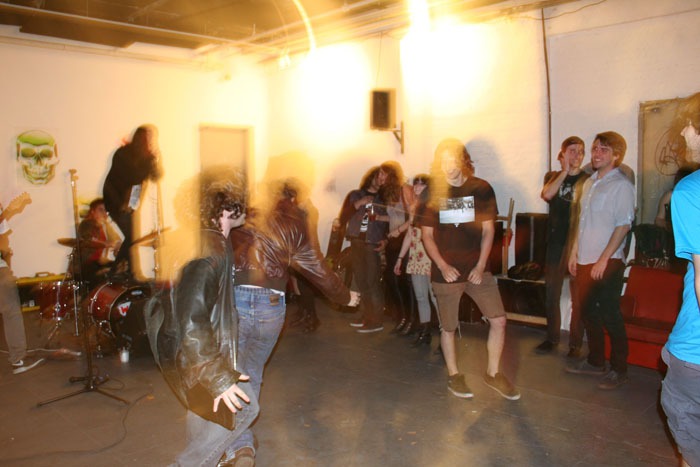By Jen Hitchings
It’s 10:00am on the opening day of the show.
Curator: “There’s something I had to do today…”
Curator’s boyfriend: “Throw a massive party?”
Rooms are never prepped. Artists forget installation day. Bands cancel hours before the opening. Your printer runs out of ink. FedEx delivers artwork but you’re not home to sign for it because you’re getting bagels with your friends around the corner, so it gets sent back to the office in Maspeth. You don’t know how to get to Maspeth because you don’t have a car. Your co-curator saves the potentially-empty gallery wall space by driving you to Maspeth 4 hours before the opening. And this is just a fraction of the obstacles that the independent curator has to hurdle over in order to put a few dozen pieces of artwork on some walls.

Poster Design by Spencer Alexander
[quote]Somehow, you make people tell you throughout the night that you should do this more often, while you think ‘THIS IS THE LAST TIME…’ but you know it won’t be.[/quote]
This past Saturday, Bear Skin opened at Brooklyn Fire Proof. The visual curator was yours truly, and the bands were booked and sound handled by my friend and audio engineer Jon Perrelly (together, we make up Party Species.)
Curating group shows in a venue that you don’t own is kind of like herding a field of cattle that may or may not have Mad Cow disease with someone else’s sheep dog that speaks another language. Okay, it’s not always that unpredictable, but it has the potential to be. You have six artists in the show and six walls divided by columns. What do you do if one of them leaves the country and forgets to give you their work? While a show is up for a week, some work gets stolen or damaged and the venue has no security cameras – what do you tell the artist? You may say “installation will occur between 7-9pm” and end up dropping the hammer at 2am on a Friday night. You may hold on to work for 6 months after the show ends. There are a million things that can go wrong with the execution of a show, but at the end of it all, a considerable amount of people got a chance to look at work that they most likely wouldn’t have seen had you not spent all that time and caused all those self-inflicted headaches. You also most likely will get a chance to speak to other dedicated artists and curators and set up a studio visit in your euphoric and tipsy state during the opening. Not to mention it helps to have a bunch of supportive, creative, and skillful friends to put tacks in the wall, collect money at the door, fold your press booklets, snake audio cables through the walls, laugh at you for being so neurotic about measurements, and to get the crowd going insane during the bands performance.
If you are a dedicated curator, you make the show work. You make the artists happy to have their work hanging in a place other than their bedroom wall. Somehow, you make people tell you throughout the night that you should do this more often, while you think ‘THIS IS THE LAST TIME…’ but you know it won’t be.
All in all, if you love art and community enough to curate a show, go for it. Mad Cow Disease has fallen 90% since 2005, and some artists appreciate your efforts enough to thank you endlessly, or at least to buy you a beer.
Below are some photos from the opening night.



